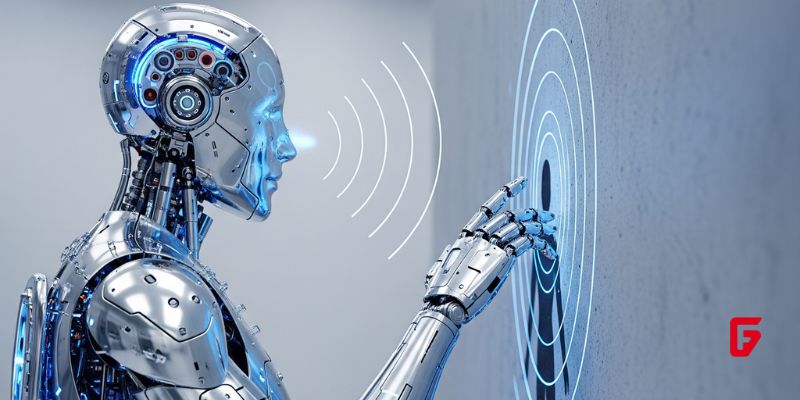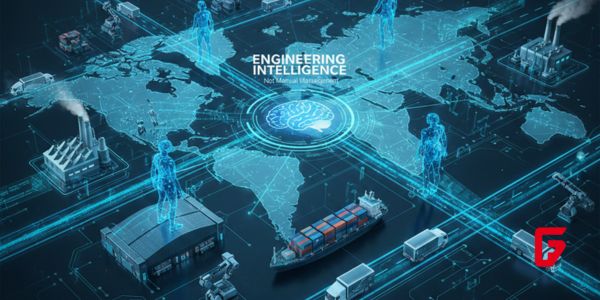
Imagine a world where humanoid robots can not only walk and talk like us but also “see” what’s hidden behind solid barriers. That’s no longer science fiction. Researchers at MIT have developed a technology that enables robots to peer through walls using advanced wireless sensing and artificial intelligence.
The secret lies in a combination of radio frequency (RF) signals and machine learning algorithms. Unlike visible light, RF signals can penetrate walls and other obstacles. The system emits low-power RF waves, which bounce off objects—even those hidden from direct view. By analyzing the returning signals, the robot’s AI reconstructs the location and movement of people or objects on the other side.
What makes this breakthrough stand out is its integration with humanoid robots. These robots are equipped with sophisticated sensors and AI, allowing them to interpret RF data and navigate complex environments autonomously. This fusion of hardware and software marks a significant leap in robotic perception.
Search and Rescue: Robots could locate survivors in disaster zones where visibility is limited.
Security: Enhanced surveillance capabilities without the need for invasive cameras.
Healthcare: Monitoring patients in home settings without breaching privacy.
The technology also raises important questions about privacy and ethical use. As robots become more capable, society will need to address how and when these abilities are deployed.
Robots with wall-perception capabilities introduce several significant ethical concerns:
Privacy invasion: The ability to “see” through walls can lead to unprecedented levels of surveillance, potentially violating the privacy of individuals in homes, workplaces, and public spaces. People may be monitored without their knowledge or consent, creating a Big Brother environment and undermining personal autonomy.
Consent and autonomy: Individuals should have the right to know when such technology is in use and to give or withhold consent. Vulnerable groups, such as the elderly or those with cognitive impairments, may not fully understand or be able to control when and how these robots are operating around them.
Data security and misuse: The data collected by wall-perceiving robots could be misused for unauthorized surveillance, profiling, or even criminal purposes if not properly secured and regulated.
Psychological impact: Constant awareness of being potentially observed—even through walls—can cause discomfort, anxiety, and a loss of trust in both public and private environments.
Ethical deployment: There is a need for clear guidelines and policies to ensure these robots are used in ways that respect human dignity, protect rights, and serve the public good, rather than enabling unchecked surveillance or manipulation.
This innovation is part of a broader trend in robotics and artificial intelligence. Humanoid robots are increasingly equipped with human-like cognitive functions, advanced sensors, and the ability to interact naturally with people. As their capabilities grow, so does their potential impact on industries ranging from healthcare to manufacturing.
MIT’s work is a glimpse into a future where robots are not just tools, but partners—able to understand and interact with the world in ways that were once unimaginable.

Editorial Team
futureTEKnow is a leading source for Technology, Startups, and Business News, spotlighting the most innovative companies and breakthrough trends in emerging tech sectors like Artificial Intelligence (AI), Robotics, and the Space Industry.
Discover the companies and startups shaping tomorrow — explore the future of technology today.

Generative Bionics, an Italian spin-out from IIT, is building Physical AI–powered humanoid robots to tackle labor gaps and modernize industrial

Stay ahead of AI and space tech wars: OpenAI vs Google AI, SpaceX and Blue Origin’s race for orbital data

This article explores 10 AI-driven supply chain optimization companies to watch in 2026, highlighting how their platforms improve forecasting, logistics,

AWS frontier agents introduce a new era of autonomous AI coders that can build, secure, and run applications for days

Explore the cutting-edge ways AI is enhancing Lean Six Sigma, from real-time process insights to predictive controls, ushering in a

Facing supply chain challenges in 2025? High-performing teams leverage AI for risk management, demand forecasting, supplier analytics, and end-to-end visibility

Craft an AI-powered supply chain Center of Excellence that unifies control tower visibility, analytics, and inventory optimization into one strategic

Supply chain leadership is being redefined by AI, intelligent automation, and agentic decision-making, demanding leaders who can engineer end-to-end intelligence

WisdomAI has closed a $50M Series A led by Kleiner Perkins and Nvidia’s NVentures to turn fragmented enterprise data into

Dutch agri-tech startup Saia Agrobotics has raised €10M to expand its greenhouse automation system using AI-powered robots that make farming

Bridgit Mendler’s Northwood Space is pioneering mass-produced ground stations, enabling scalable, high-speed connectivity for the new era of satellite networks

SpaceX aims to nearly double launches from Vandenberg in 2025, facing support from federal agencies but strong objections from the